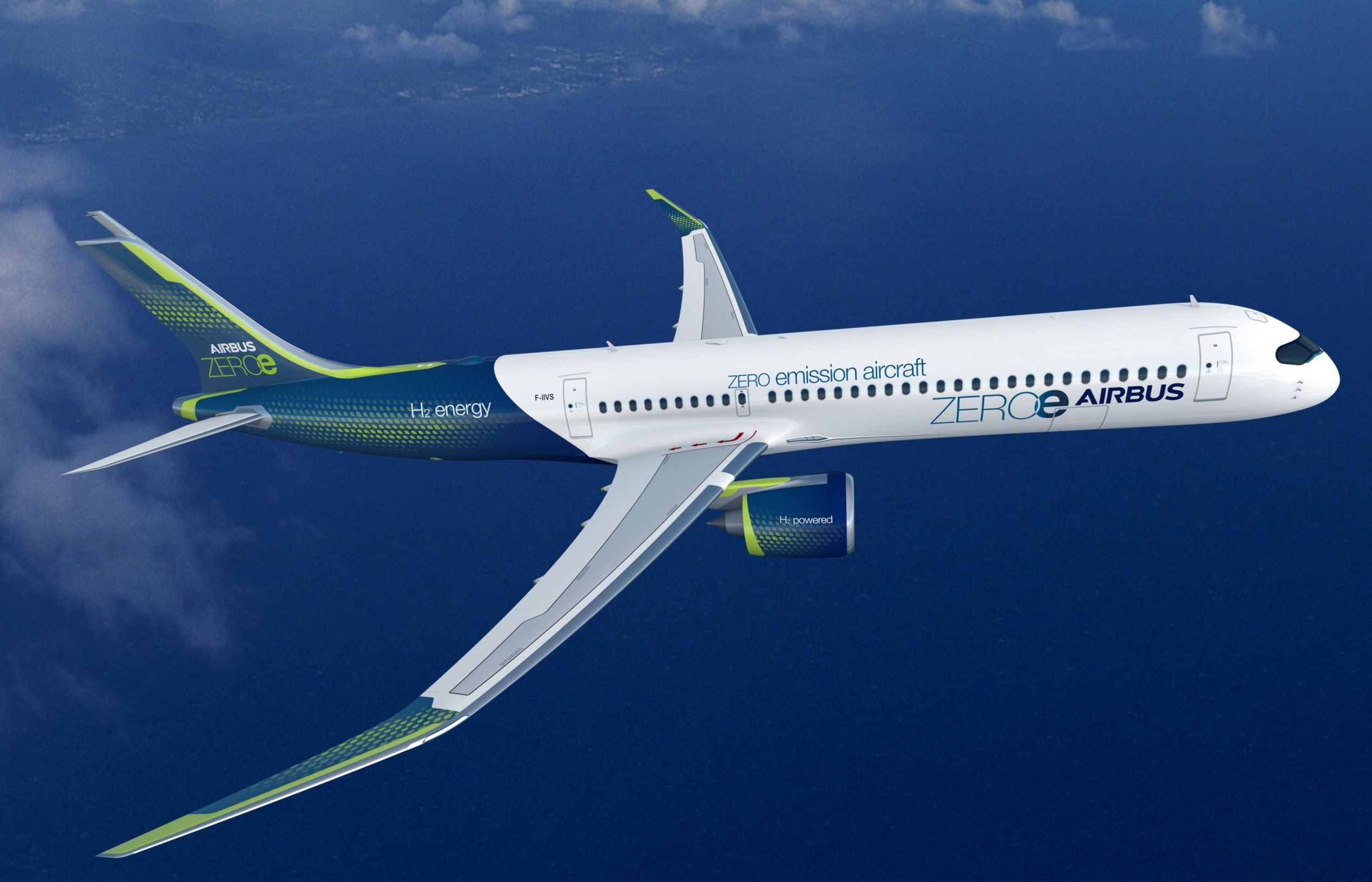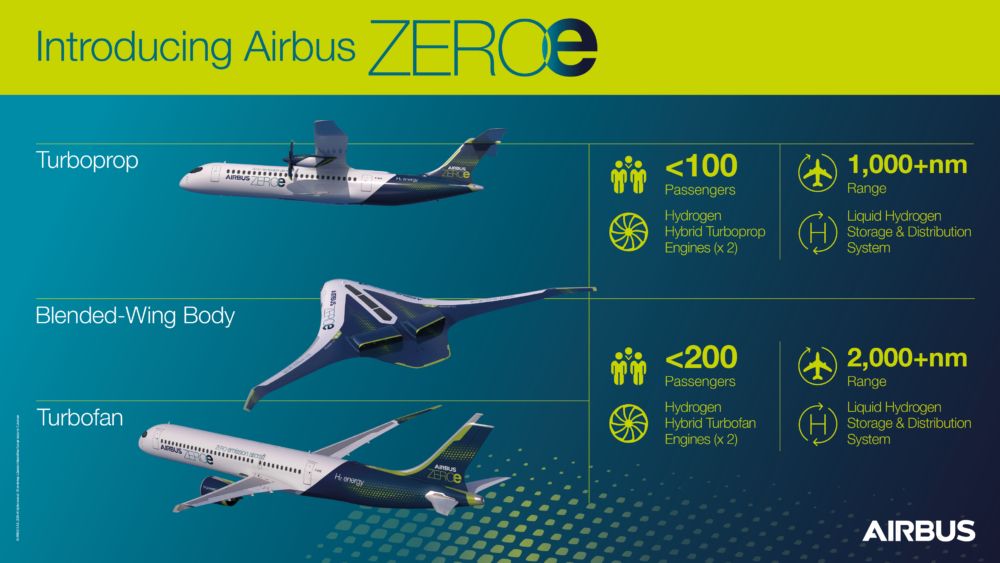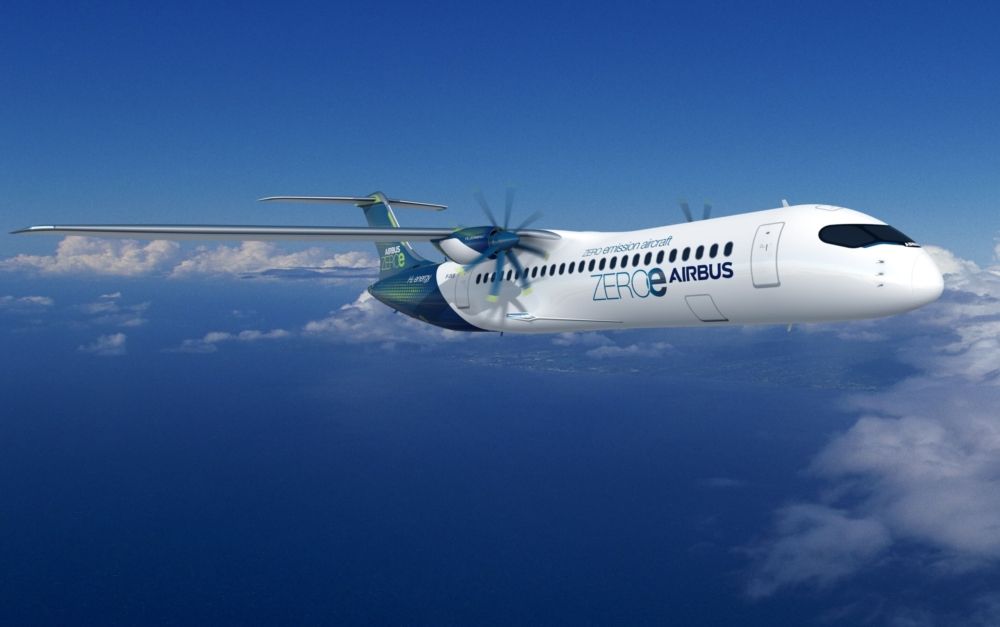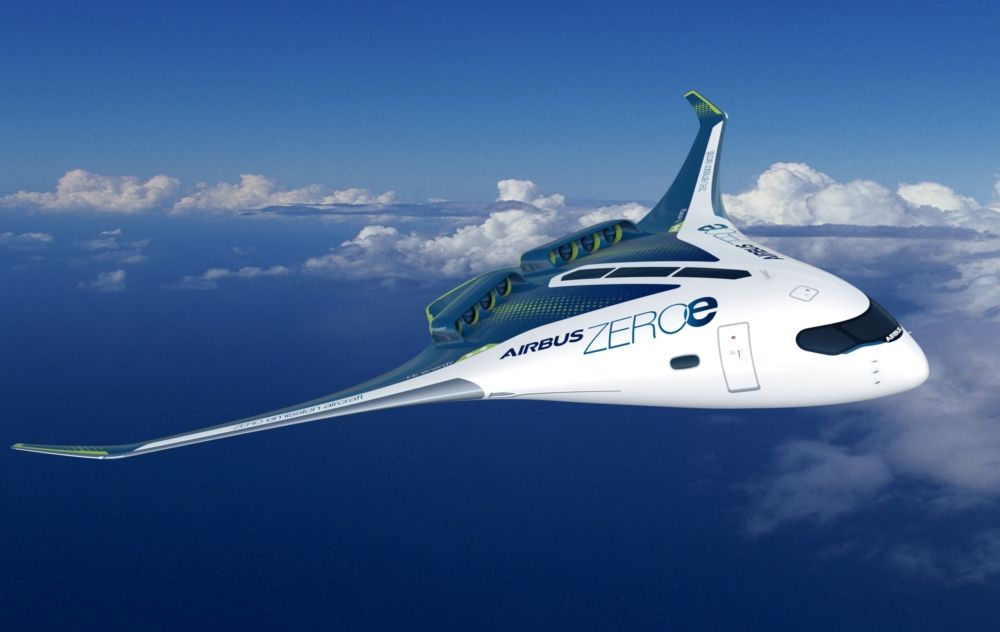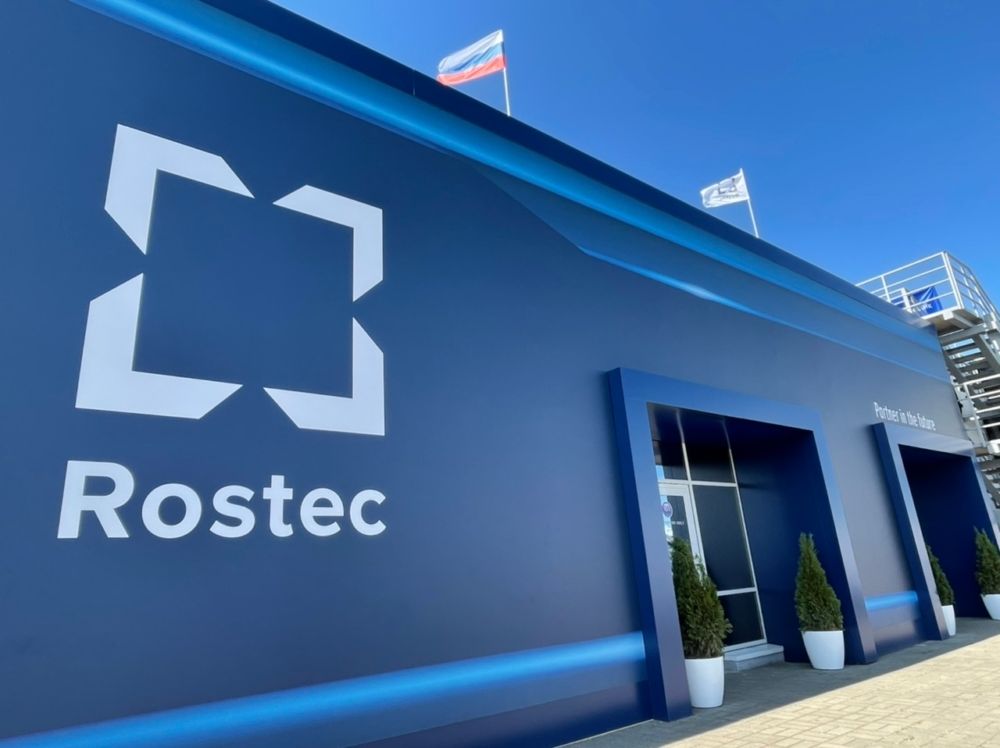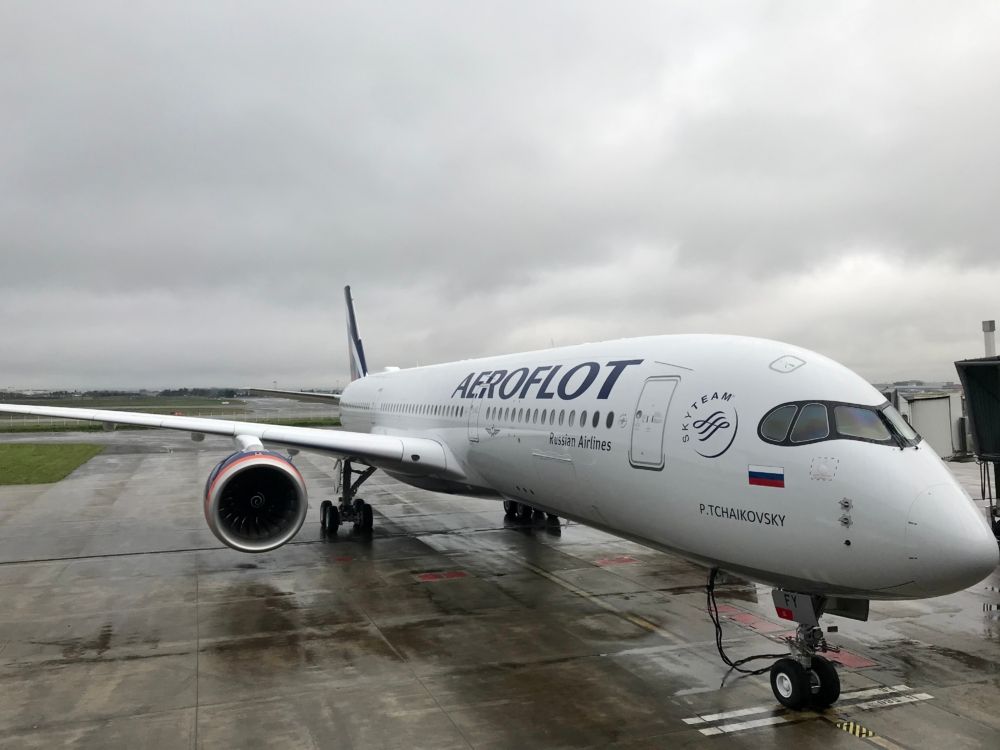Airbus' three ZEROe concepts are primarily focused on short and medium-haul services. The European manufacturer is eager to develop the world’s first zero-emission commercial aircraft by 2035 with these designs. Julien Franiatte, Head of Airbus Russia, recently spoke with Simple Flying about the prospects of these planes in Russia.
Grand prospects
Airbus proudly shared details of the three hydrogen-powered concepts last year. The firm believes that hydrogen propulsion will help it complete its mission to reach zero emissions.
Altogether, Airbus is looking intently at new systems that will help it introduce the aircraft. The company feels this technology will mature by around 2025.
Airbus expects to launch the program between 2026 and 2028 to be ready for service entry by 2035. Regarding the types, there is no front runner at the moment as Franiatte concludes that all of the studies are progressing well.
“We are currently evaluating several propulsion-system technologies, including hydrogen combustion in modified gas-turbine engines, hydrogen fuel cells, and cryogenic storage of hydrogen in insulated tanks. Our final decision will be made when the selected technology’s maturity reaches an adequate level. We expect the technology to achieve this level around the middle of this decade,” Franiatte told Simple Flying
“At this stage, we’re focusing on short- and medium-haul travel. The ranges we are studying will enable intra- continental travel. So given Russia’s vast size, a future ZEROe aircraft could be a good option to link travelers across the country.”
Stay informed: Sign up for our daily and weekly aviation news digests.
The capabilities
Russia has an area of over 16 million square kilometers (6.5 million square miles). Along with its populated metropolitan regions, it has many pockets of communities across the expansive and diverse terrain.
Two of the designs are based on standard airframes that we are already familiar with. The shorter turboprop would be able to serve 100 passengers over a range of 1,850 km (1,000 NM). Then, the larger turbofan is being studied to hold up to between 120 and 200 passengers and would carry them to a range of up to 3,700 km (2,000 NM).
The third concept, the “blended-wing body” design, would transport up to 200 passengers. Here, the wings merge with the plane's main body. This plane would have a range similar to the turbofan design.
Notably, the range of the turbofan and blended-wing body would put it in a similar class as narrowbodies such as the Airbus A220 in this field. The A220 is proving popular across Russia and its neighboring countries. For instance, Azimuth Airlines recently ordered six units of the type and will receive the first of these next year.
Potential competition
Moscow-headquartered Rostec has shared that it is keen to Russify the country’s domestic fleets by the time this decade is over. It is preparing the likes of the Irkut MC-21, Sukhoi Superjet 100, and Ilyushin 114-300 to dominate these operations by the time 2030 rolls around. Therefore, there could be somewhat of a tug of war between Airbus and the local bureaus when it comes to persuading domestic outfits to take on their products.
Additional markets
Nonetheless, even if Rostec meets its domestic goals, the positioning of major cities across Russia allows seamless international expansions with non-Russian builds. The specifications of even the small ZEROe turboprop would allow for trips to several Eastern and Northern Europe hotspots. Additionally, the larger designs could reach much of Europe and the Middle East seamlessly.
Russia has strong ties with several of its neighboring nations, especially the members of the Commonwealth of Independent States (CIS). So, the two longer-range units could fly to the likes of Armenia, Azerbaijan, Belarus, Kazakhstan, Kyrgyzstan, Moldova, Tajikistan, and Uzbekistan, replacing the current jets that are deployed to these countries.
Airbus is keen to increase its market share in Russia. It has a 52% share against Boeing in the country and has created a sector that supports over 1,500 jobs.
Moreover, the nation is a crucial provider of important materials to make aircraft. For instance, half of the manufacturer’s titanium comes from there. Airbus also supplies other vehicles such as helicopters to the country. So, even if Rostec boosts its domestic stronghold, Airbus will still have a strong presence in Russia over the next few decades.
A new generation
Sustainability is at the forefront of Airbus’ strategy in this next chapter. The company is investing in important areas such as smart air traffic management solutions and sustainable aviation fuels (SAF).
Moreover, unlike some skeptics across the industry, the firm has a lot of faith in hydrogen solutions. With Airbus so keen to introduce the first zero-emission aircraft in the world by the middle of the next decade, we can naturally expect to see the plane featured in the company’s key markets, including Russia.
Overall, it’s still early days in the ZEROe program. Regardless, sustainability is a major priority for Airbus, and Russia is a key market. So, the prospective aircraft should adapt well to the requirements of the country’s aviation industry in the coming years.
What are your thoughts about the prospects of the three Airbus ZEROe concepts? Do you feel that the aircraft will be one of the key answers to sustainable aviation in the coming decades? Also, which other solutions do you anticipate to work well in this field? Let us know what you think of the planes and their potential in the comment section.

